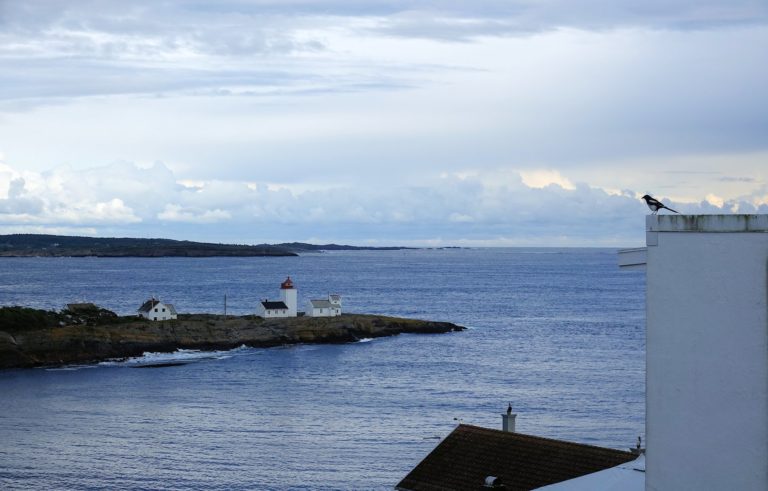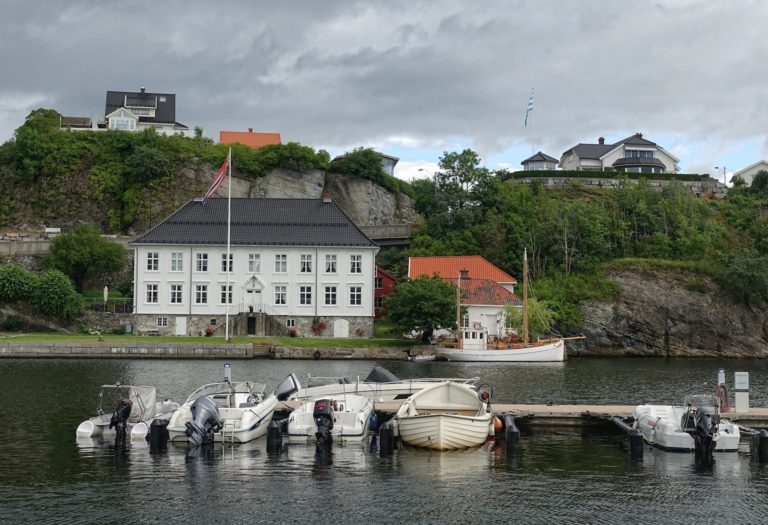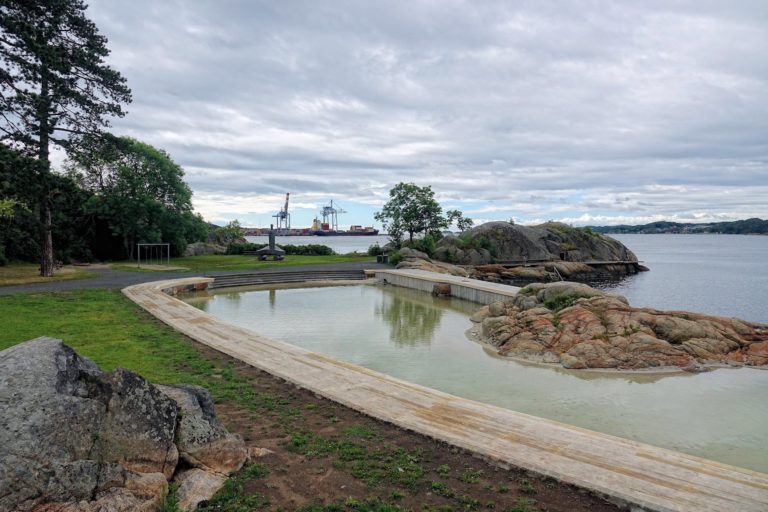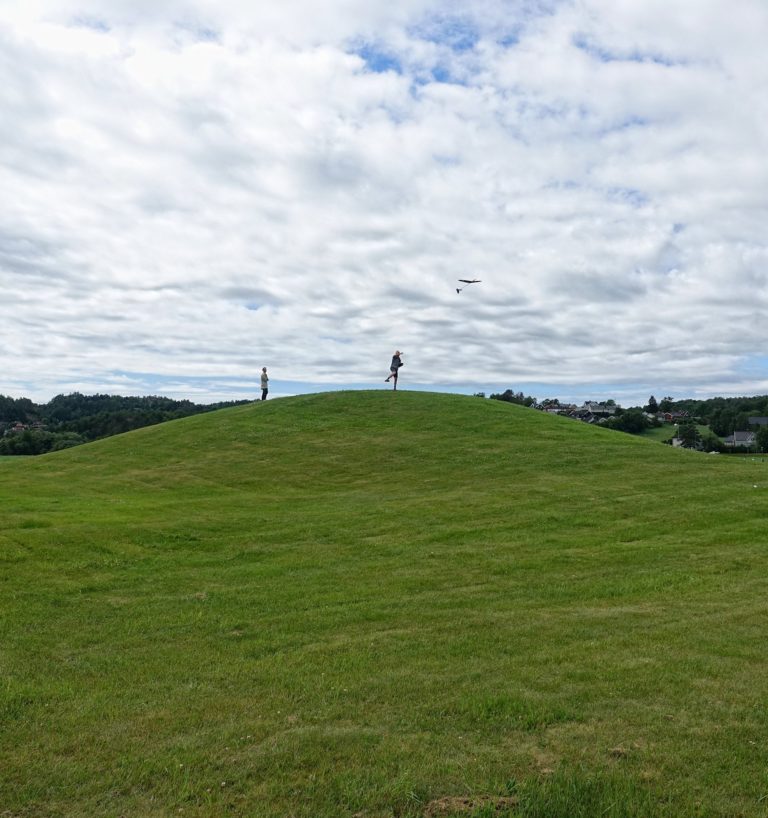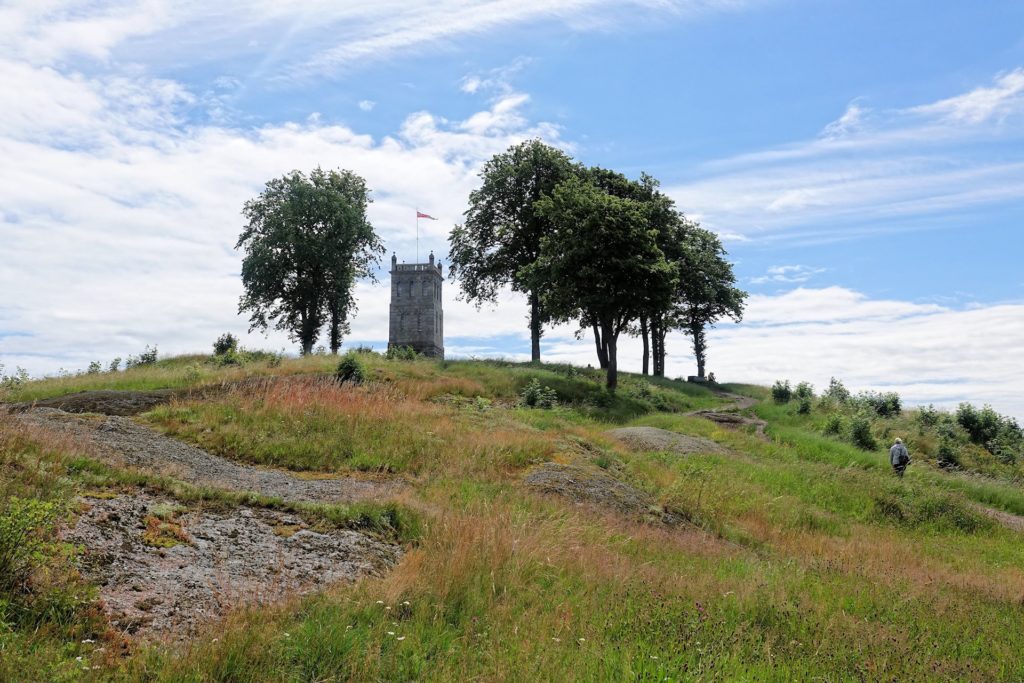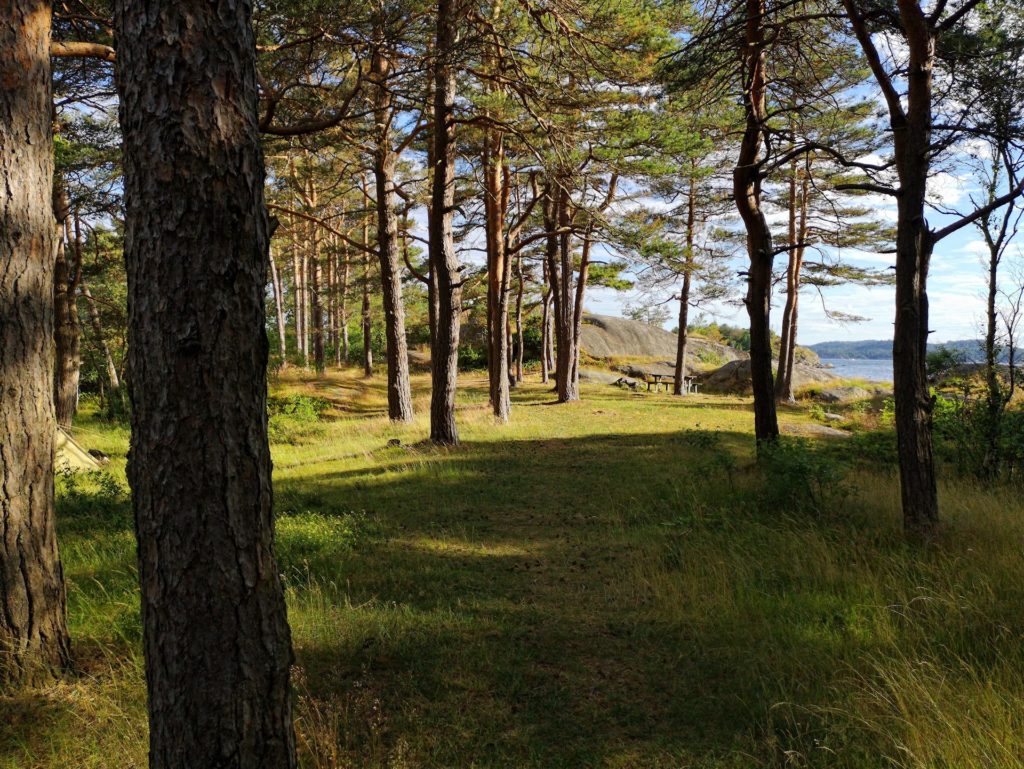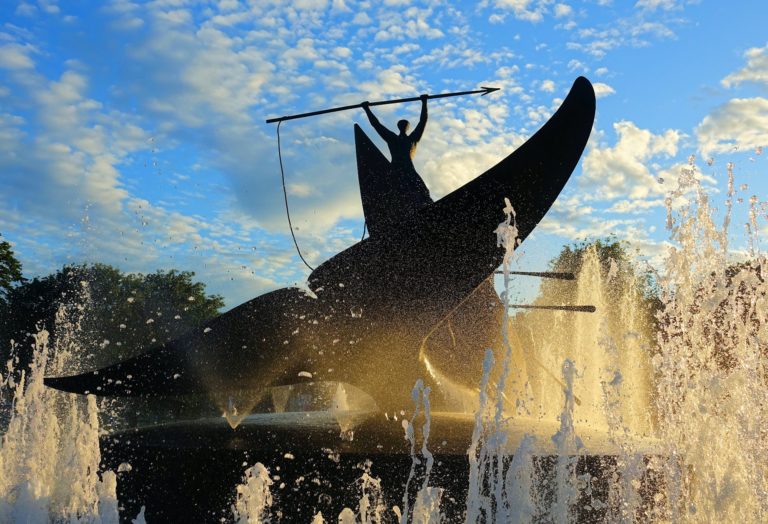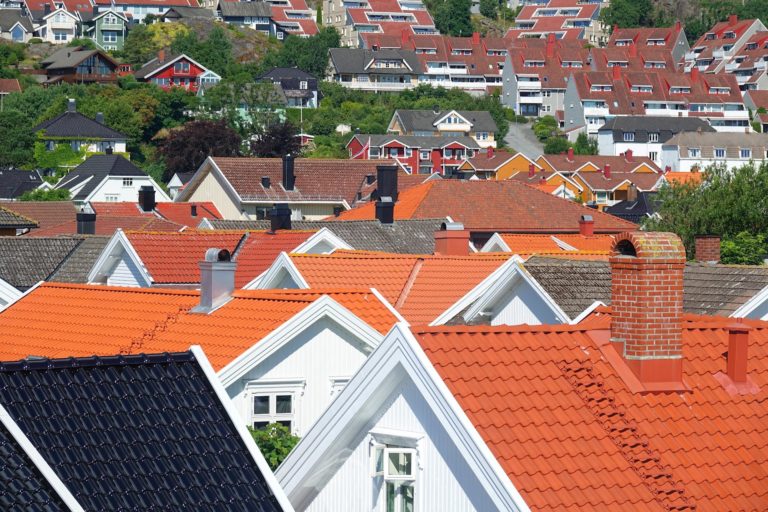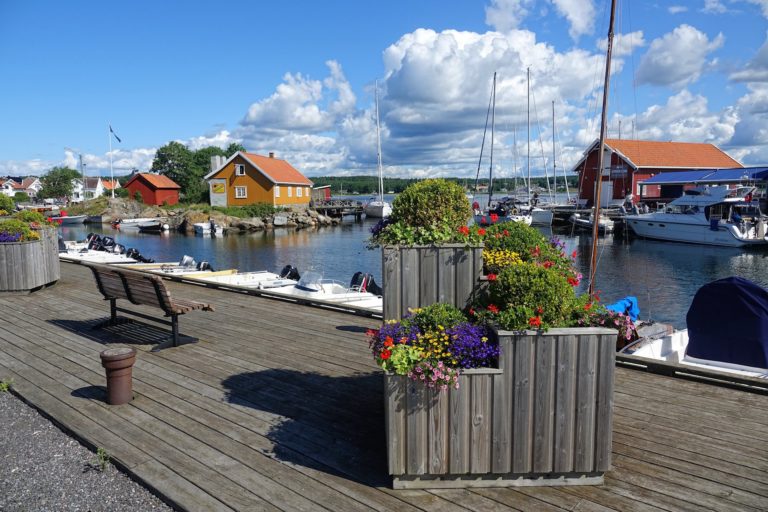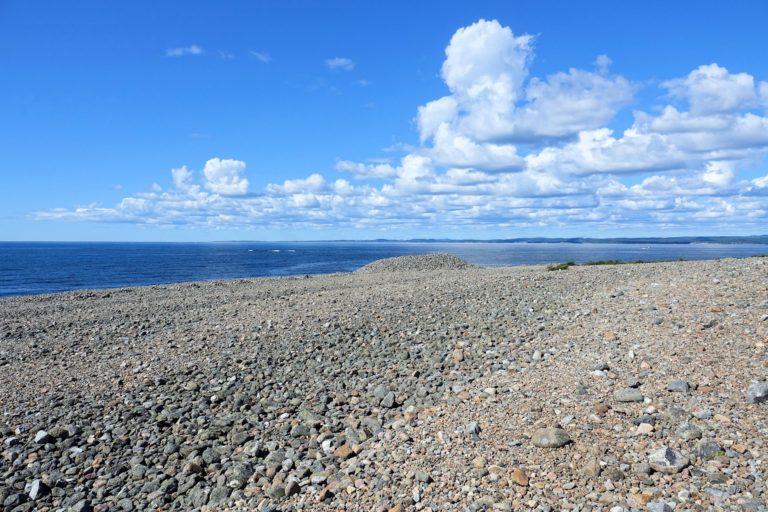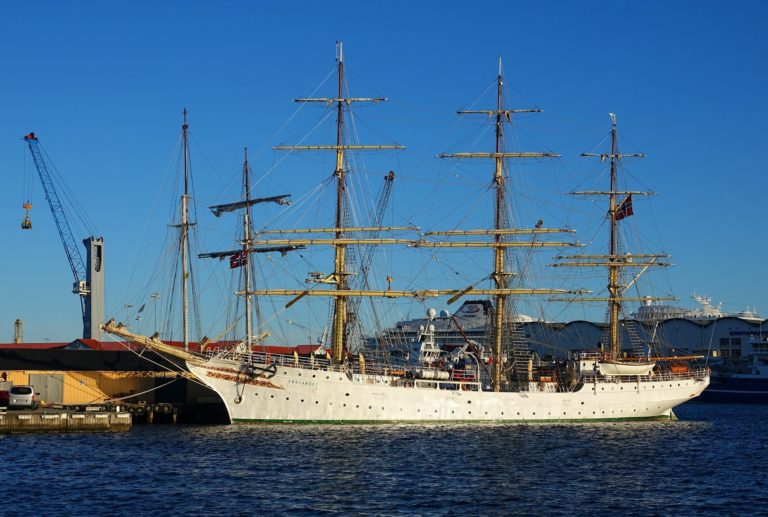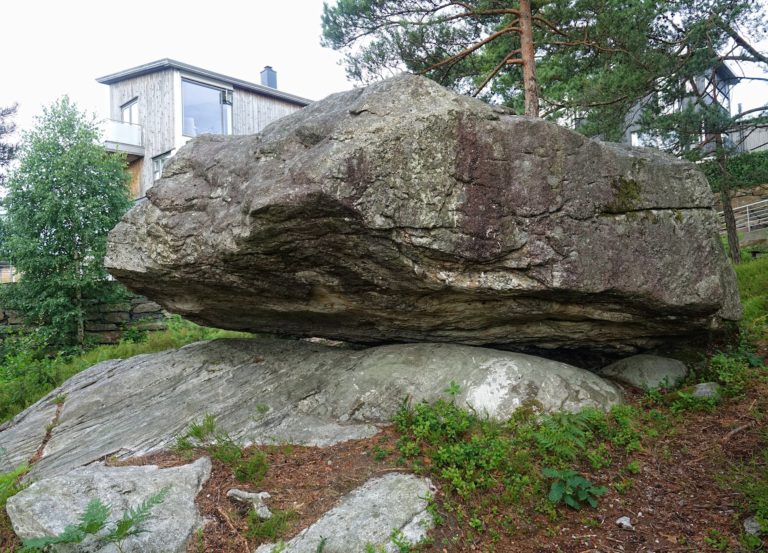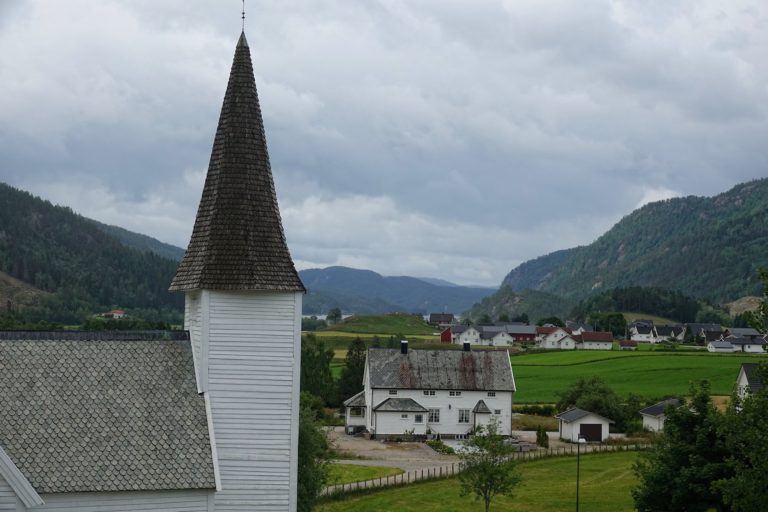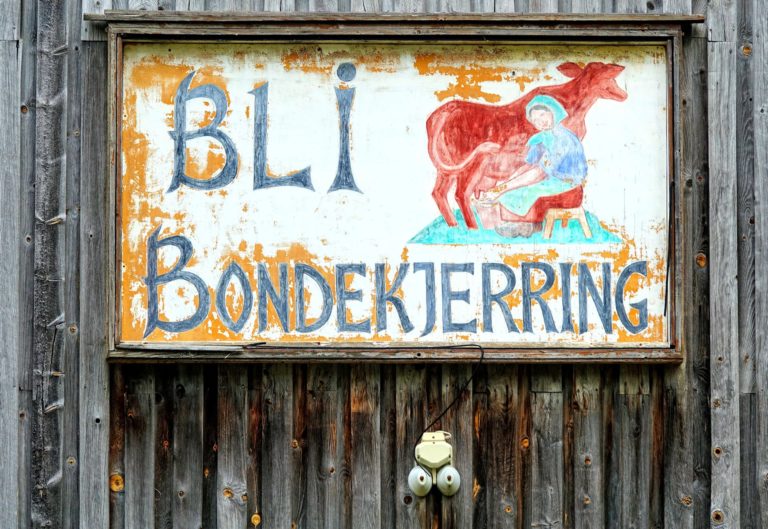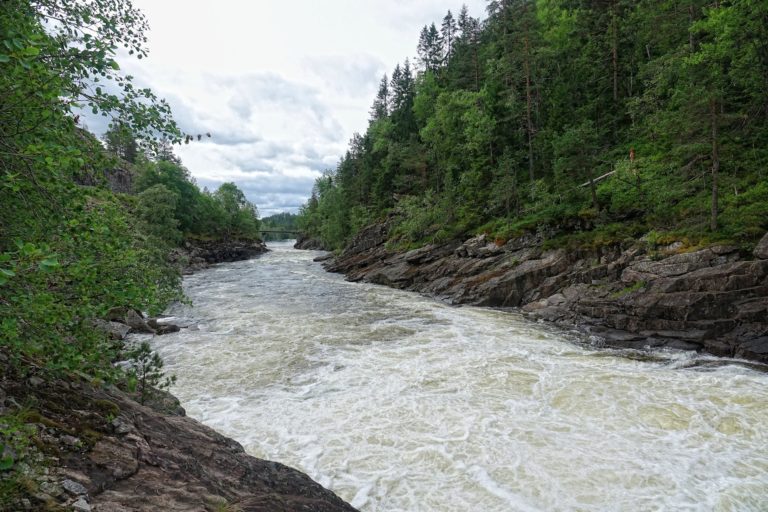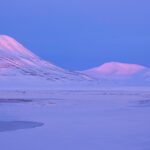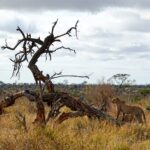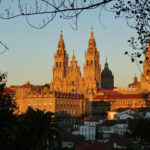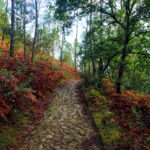This July road trip between Oslo and Kristiansand could hardly be any more different from the one we did back in March, when we traveled through Lofoten. Instead of being frozen while surrounded by magnificent rough scenery, we’ll follow a trail of cute and touristy seaside towns taken straight out of Disney’s Frozen.
During any normal summer, this region receives far more domestic tourists than any other part of Norway. For some reason, I’ve never visited this part of my own country before. My impression has always been that it’s popular mainly because it’s near where most Norwegians live, making it an easy option. Norwegians also love to swim in the ocean whenever you can do so without freezing to death, and there are many pleasant beaches and islands here.
Now I’ll find out what more there is to it.
Our first stop is lake Landfalltjern, near the city of Drammen.
It’s a chilly day, so the bathing facilities float abandoned and silent in the water. We enjoy the quiet view, grab a geocache, and move on.
Reaching the actual coast, we stop for the night in the small town Langesund. There are officially 5,500 inhabitants in the municipality, but when people come here to stay in the 2,500 summer houses, the population easily more than doubles.
Top tip to avoid the crowds: Get up early in the morning and do some sight-seeing. It’s all nice and quiet until at least around 10 in the morning.
People who own a summer house here are often at least semi-rich, but this is Norway, so the houses are not surrounded by barbed wire and surveillance cameras.
Instead they have guard dogs like this one, who just wants to cuddle.
It’s still unusually cold for the season, so we barely see anyone else on our walk through Langesund.
A magpie observes what would have been complete silence, were it not for the eternal rows of waves from Skagerrak that crash onto the shore here.
At the next bay over, in Brevik, we get our first look at summer houses of the more exclusive kind.
The entire waterfront of this village is filled with huge buildings, often with a private dock. Behind them, up on the hill, are more high-standard homes, commanding great views and probably meant to invite far more envy than visitors.
Backtracking a little bit, we go to Larvik to have a look around. It’s a much larger town, with a pleasant public beach.
Larvik is more famous for its beeches than its beaches. As much as 10 percent of all beech trees in Norway grow in a public park here, and in the shade of those trees there are around a hundred burial mounds, streching in origin from the pre-Roman iron age and well into the era of the Vikings.
Another spot for Viking enthusiasts is Gokstad. A 9th-century Viking ship was dug out of this mound just outside Sandefjord, and can now be viewed remarkably intact at the Viking Ship Museum in Oslo.
I was not sure what to expect to see at this site, but to see it being used by middle-aged men for throwing model planes into the air from, that was definitely not on the list.
In probably the oldest city in Norway, Tønsberg, we hike up on Slottsfjellet, Castle Mountain.
A single tower remains of what once upon a time was an impressive medieval fortress.
South of Tønsberg is Færder, a municipality consisting of islands that were all below sea level during the most recent ice age. The terrain is flat and the geology is complicated.
At the southern tip of Tjøme island is Verdens Ende, “The End of the World”. It’s a lot less dramatic than it sounds, but put that name on a map, and people will come regardless.
I like this ancient lighthouse design. Lower the cage, light a coal and wood fire in it, raise the cage again, and voilà; you have a functional lighthouse for some time. Repeat until sunrise.
With the weather having improved throughout the day, late in the afternoon we decide to rent kayaks from Vøra, south of Sandefjord, and explore a couple of islands.
As it happens, these islands are home to a number of geocaches. In addition to them, we also find solitude here. It is most welcome after many busy streets and promenades everywhere else we’ve been today.
It’s probably just as well that this part of Norway receives mainly domestic tourists.
I doubt that this glorious whaling industry monument in Sandefjord would be popular among most foreigners. There’s no denying that hunting whales used to be an essential industry for this city, but maybe that shouldn’t be emphasized quite so much these days.
To make up for the whale killer monument, there’s a giant piece of killer whale street art just a couple of blocks away.
Not sure if it’s enough to make the whales entirely trust Sandefjord quite yet, though.
New summer houses keep getting added to the many already in place.
Stavern is one of the most popular summer towns. People pay a lot to avoid loneliness.
A few kilometers south of Stavern, we stop in Nevlunghavn, population: 700 in the winter; roughly ten times that during the summer.
The old village center itself is well groomed and retains a fishing village atmosphere, with an added dash of Gucci and Lacoste.
Wherever we go, this is basically the view we get.
Oslofjorden is a fjord only in name. A proper fjord is a long and narrow inlet, carved out from steep cliffs by glaciers. This particular fjord, however, is just wide water surrounded by flat land. At least it was partially created by a glacier, as we’ll soon see.
A proof of some long-gone glaciers are found nearby, at Mølen. A retreating glacier is like a slowly fading heart, shifting between growing and shrinking. During periods of growth, it will push rocks in front of it, and leave big stone piles at its edge as it shrinks again. In Mølen we see the remains of such an edge; Raet, the largest terminal moraine in Scandinavia.
People followed the glaciers retreat and took advantage of the resources it left behind. In Mølen there are hundreds of graves and burial mounds dating back to the Iron Age, well before Christianity reached these shores. The many rolling stones gathered on this beach was perfect for burying anything.
We know close to nothing about their culture, but we can still see traces of it.
Next follows a series of look-alike seaside towns all the way down the coast; Kragerø, Risør, Tvedestrand, Arendal, Grimstad, Lillesand. They’re all pretty, and it’s probably a vastly better idea to spend several days in any one of them, than to quickly visit them all. Lesson learned.
Either way, at the end of the day we reach Kristiansand, the fifth largest city in Norway, and capital of the south.
This city is usually a very happening place during summer, but despite the blue sky, today is a relatively cold day, and we do live in the time of the coronavirus. The city has several idyllic beaches, like this one, Bendiksbukta.
Instead of happy summer parties on the grass, there’s just us. This is how you choke a pandemic.
Even the “tropical” beach in downtown Kristiansand is quiet. These palm trees have been put here just for the summer. Kristiansand is the southernmost city in Norway, but not that far south.
“Sørlandet” is a heritage tall ship whose home port is of course Kristiansand.
She is in great shape for being almost a hundred years old. Throughout the years, and still ongoing, many young girls and boys have been both attending high school and learning seamanship while sailing around the world on this vessel. When she’s home, she is quite the tourist attraction in this city.
Another main attraction of Kristiansand is this; the rocking rock of Justnes!
The stone, weighing several tons, was so carefully balanced by the glaciers, that today even just one person can push it so that it moves a little bit back and forth. Or at least that was the case until nobody did so for a few years, and a pine tree saw its chance to shoot up from the ground and grow into the rock, thereby stabilizing it.
So now the rocking rock doesn’t rock any more. But one day the tree will die, and the rocking can start again.
Our final stop is Åseral, a village with only one road leading into it, and none out again. We come here to complete our side quest; to visit all the 25 municipalities in Agder county.
It’s a distinctly rural district, with at last some great scenery to behold. The municipality has roughly one inhabitant per square kilometer. In short, this is the opposite of all the busy coastal towns we just came from. Love it.
Entering the main village in Åseral, Kyrkjebygda, we’re greeted by this propaganda sign: “Become a farmer’s wife”.
The campaign has been highly efficient. The population has increased by almost 5 percent over the last decade, so that now there are more than 900 people here! Let’s hope this growth doesn’t diminish the soul of Åseral.
Satisfied from having successfully found this far corner of Agder county, we drive back to civilization the way we came, following the river Hylen.
Taking the small roads through the countryside takes a lot longer than racing down the coastal highway. Yet it’s the right choice for us now, and soon we’re back in real life. There’s laundry to do, and then soon we’ll be ready to leave home again.
While the coastline between Oslo and Kristiansand can be cozy, pleasant and comfortable, it’s no way to scratch a travel itch. We’ll definitely find a steeper and more interesting part of Norway for our next trip.
See you there!



